Cryogenic systems for THz frequencies
Liquid Helium Cryostat as Landau Spectrometer
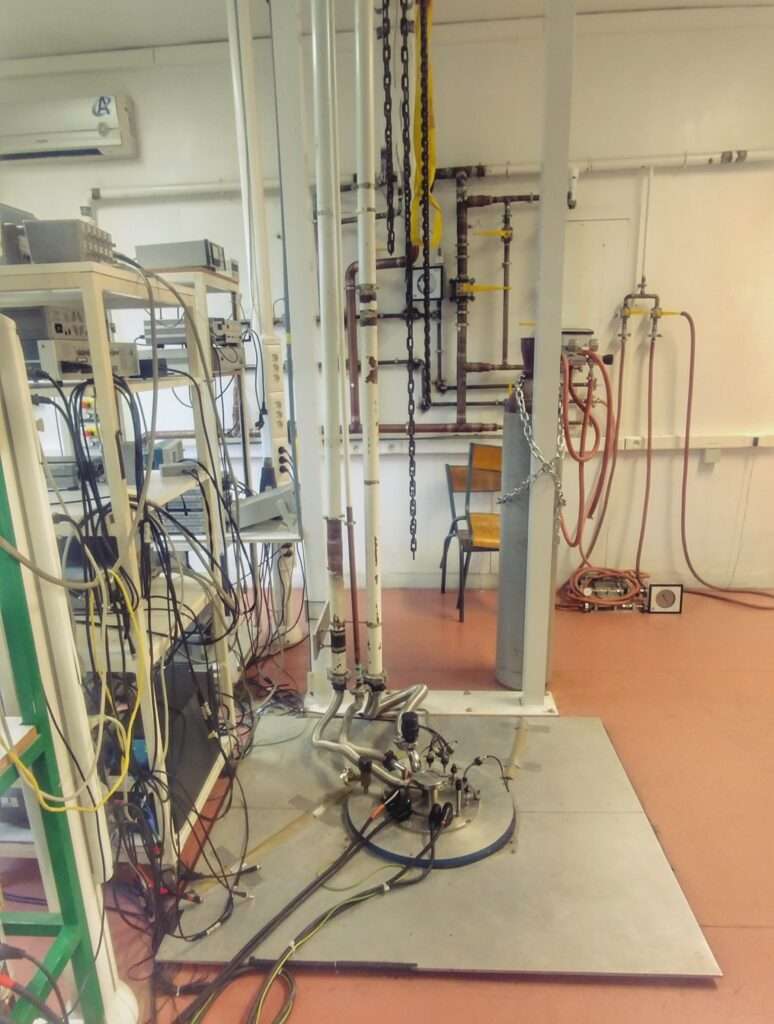
This cryostat, designed by Oxford Instruments, houses two superconducting magnets with maximum magnetic fields of 8 T and 14 T respectively.
These two magnets are separated from each other by a smaller compensation coil. This specific cryostat is used for the emission and detection of terahertz radiation.
The emitter is placed in the lower coil and excited by electric field pulses. The magnetically tunable detector is placed in the second coil. A typical detector is an n-InSb electron hot bolometer from
QMC Instruments Ltd. Most of the experiments are done at 4.2 K.
Special 16 Tesla magnet system with modulation coil and a Bolometer inside a VTI (Oxford Instruments). The bolometer is optically coupled with FFT spectrometer (Bruker)
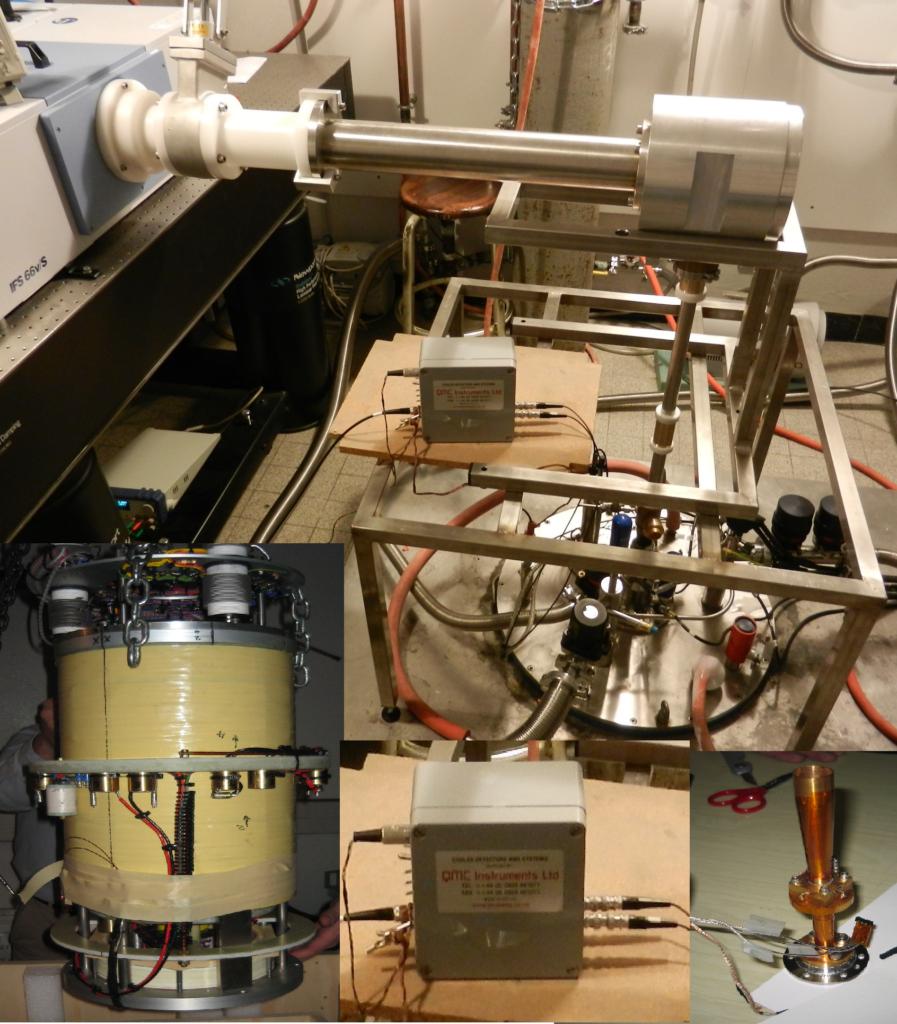
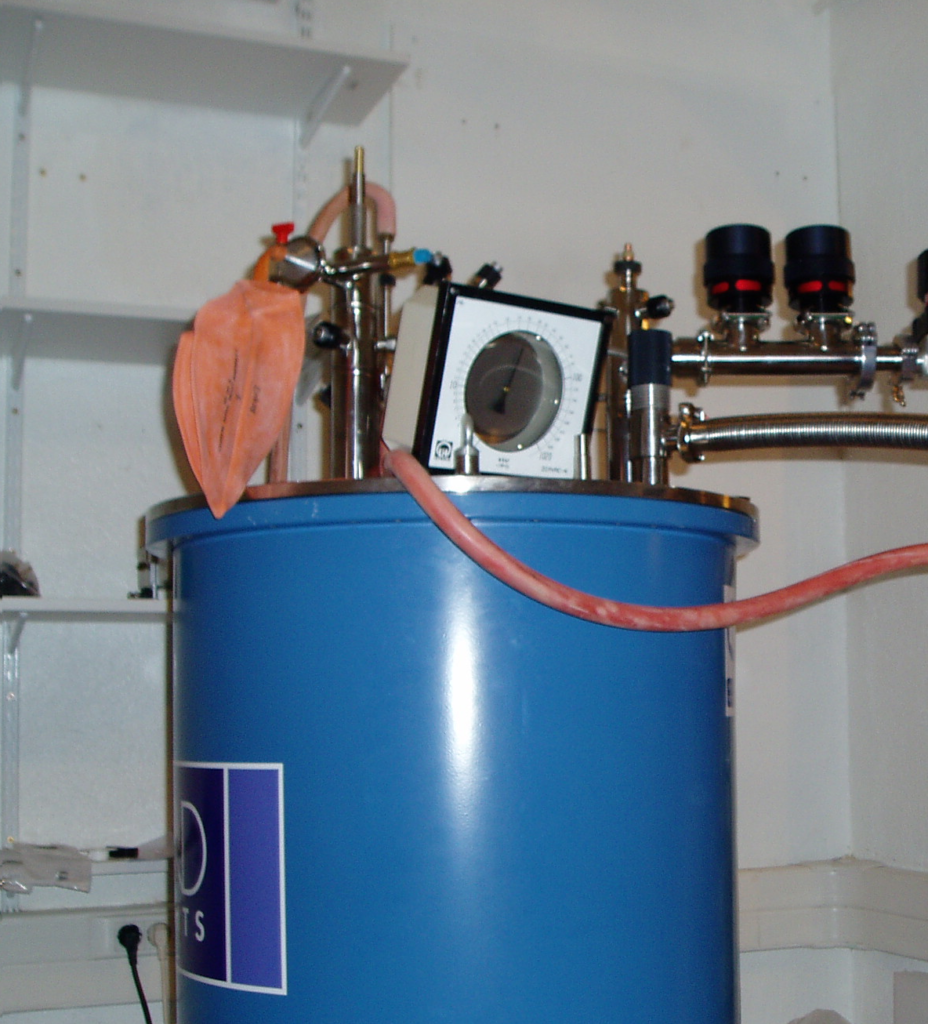
- Central flux density at 4.2 K : 16 tesla.
- Flux density homogeneity : 10 PPM over a 10 mm DSV.
- Typical flux density temporal stability : < 10 PPM relative hour-1.
- Cancelled flux density in a bolometer region: < 0.02 tesla over a region 15 mm long x 30 mm diameter centred 300 mm below the magnet centre.
- Cold bore (inside sweep / modulation coil) : 45 mm (sample space diameter – 25mm).
- Flux density sweep coil amplitude : ± 0.01 tesla.
- Flux density modulation amplitude : ± 0.001 tesla.
- Flux density modulation frequency : < 200 Hz.
- VTI:
- Helium gas flowing in the sample space.
- Base temperature 1.5K. Maximum temperature 300K.
- Temperature stability 0.1 K over 10 min using an ITC controller.
- Ge Bolometer mounted inside the vacuum space on the copper tail.
- Diamond window between sample space and bolometer space.
- Sample holders for transport, transmission and emission experiments
Refrigerator system with optical access (Janis PTSHI-950-5)
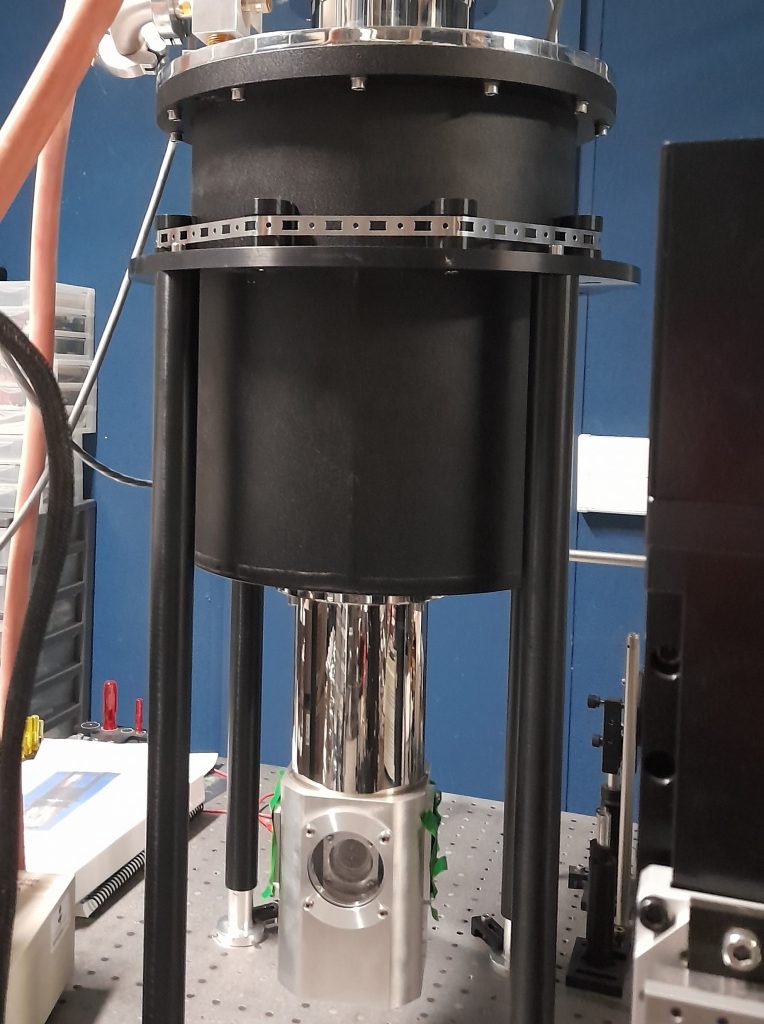
- Closed cycle refrigerator system designed to operate from below 4.5 K to 300K.
- The sample mount is suspended within a helium exchange gas sample tube.
- Sample tube provides 25 mm sample space.
- Four windows give an optical access to the sample allowing transmission in the THz range.
6T Cryogen-free magnet system with optical access (Cryogenics)
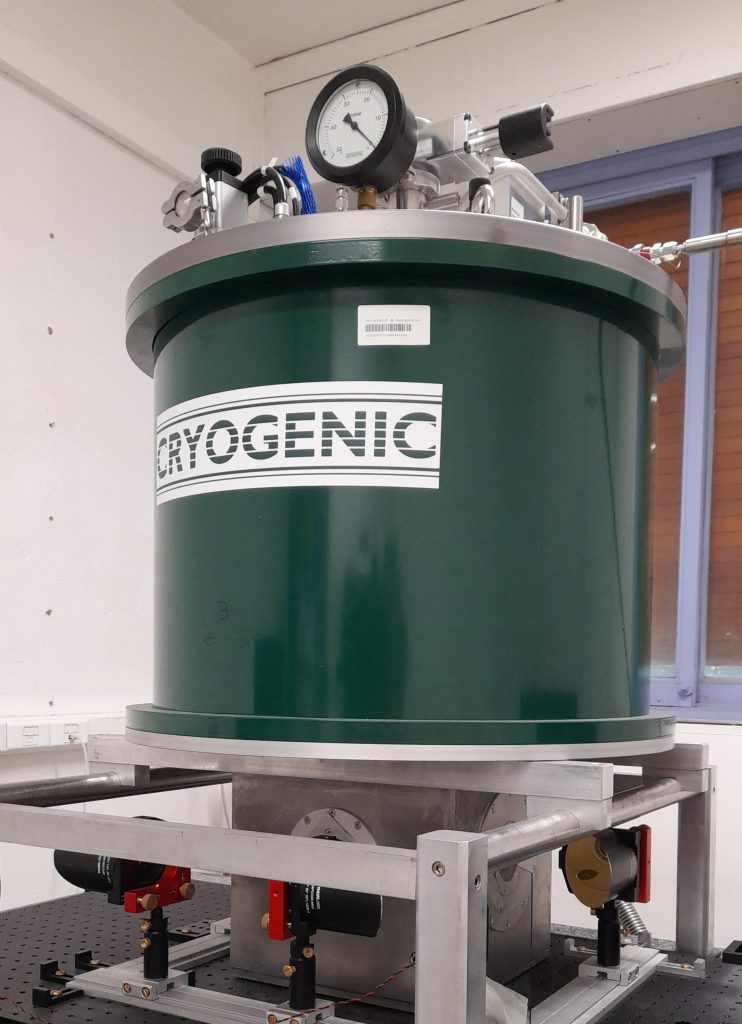
- The magnet field is in the horizontal direction, with a four-way optical cross through the coil.
- An integrated Variable Temperature Inset VTI provides 25 mm sample access vertically to the magnet center.
- On the end of the VTI is a sample pot with four windows providing optical access to the sample. There are corresponding windows on the radiation shields and on the outer vessel. All these windows are from Z-cut quartz order to have transmission in the THz range.
- The VTI sample access can be controlled at temperatures in the range 1.6 K-325K.